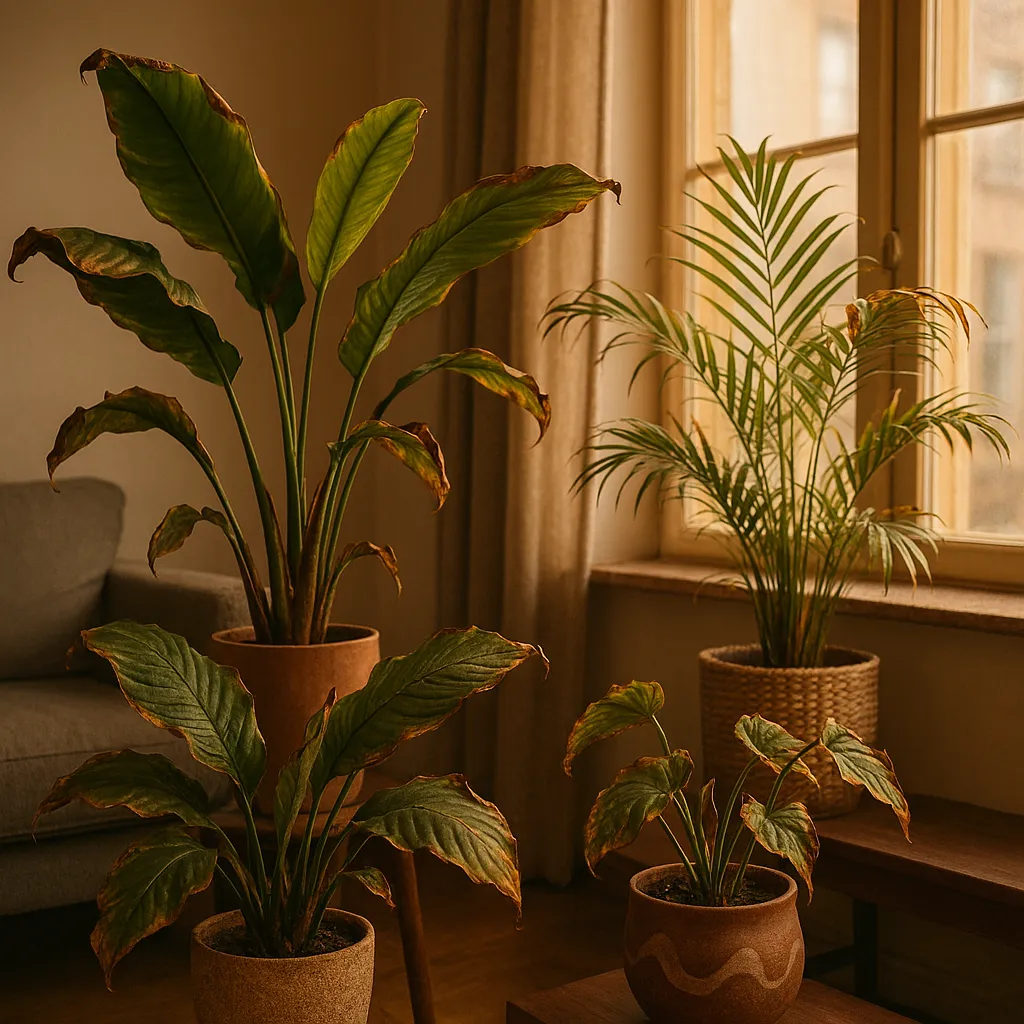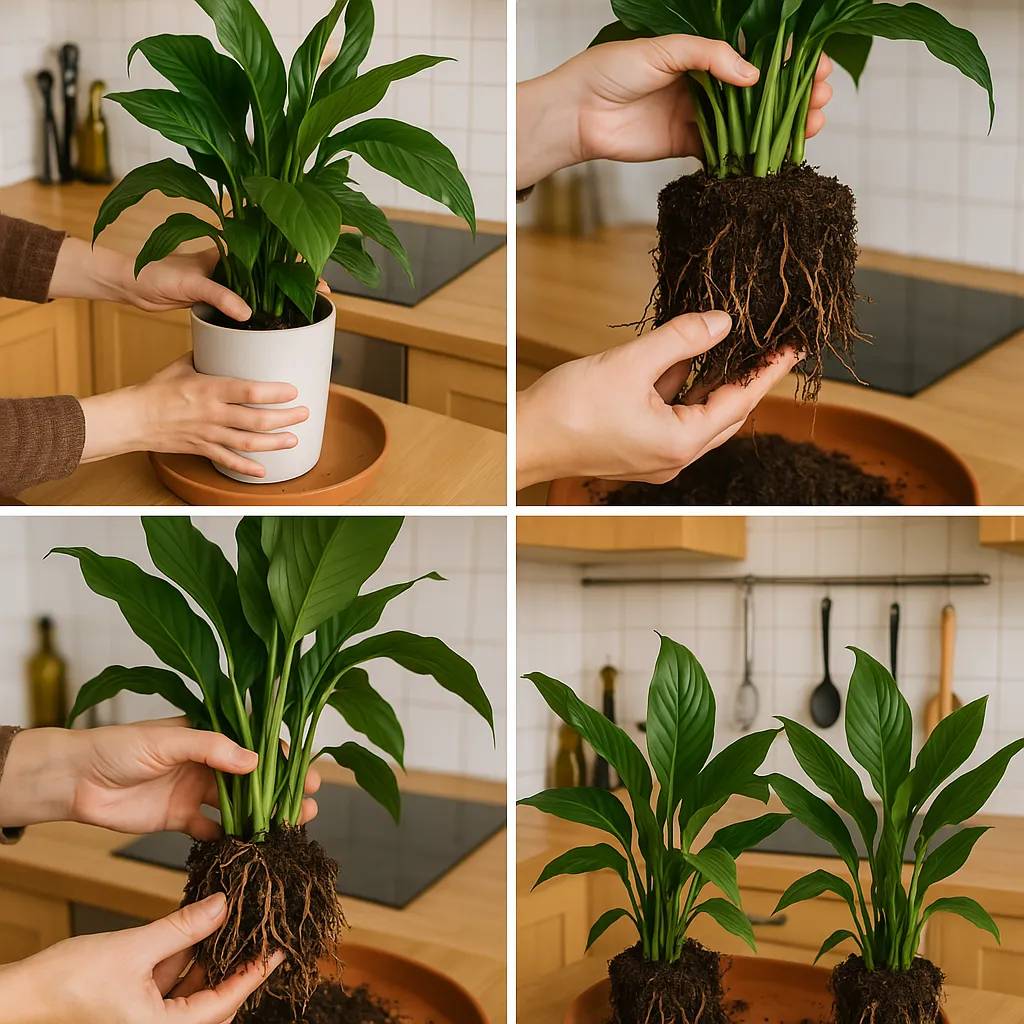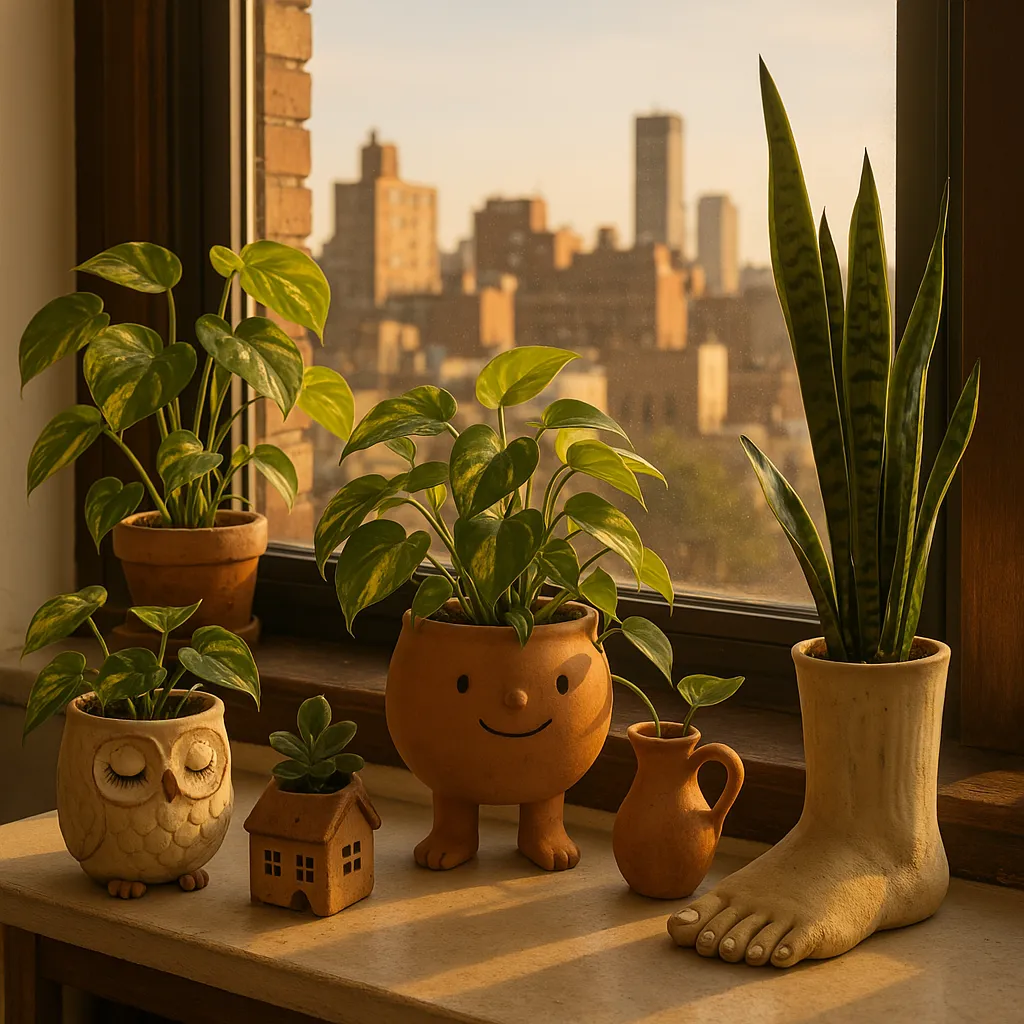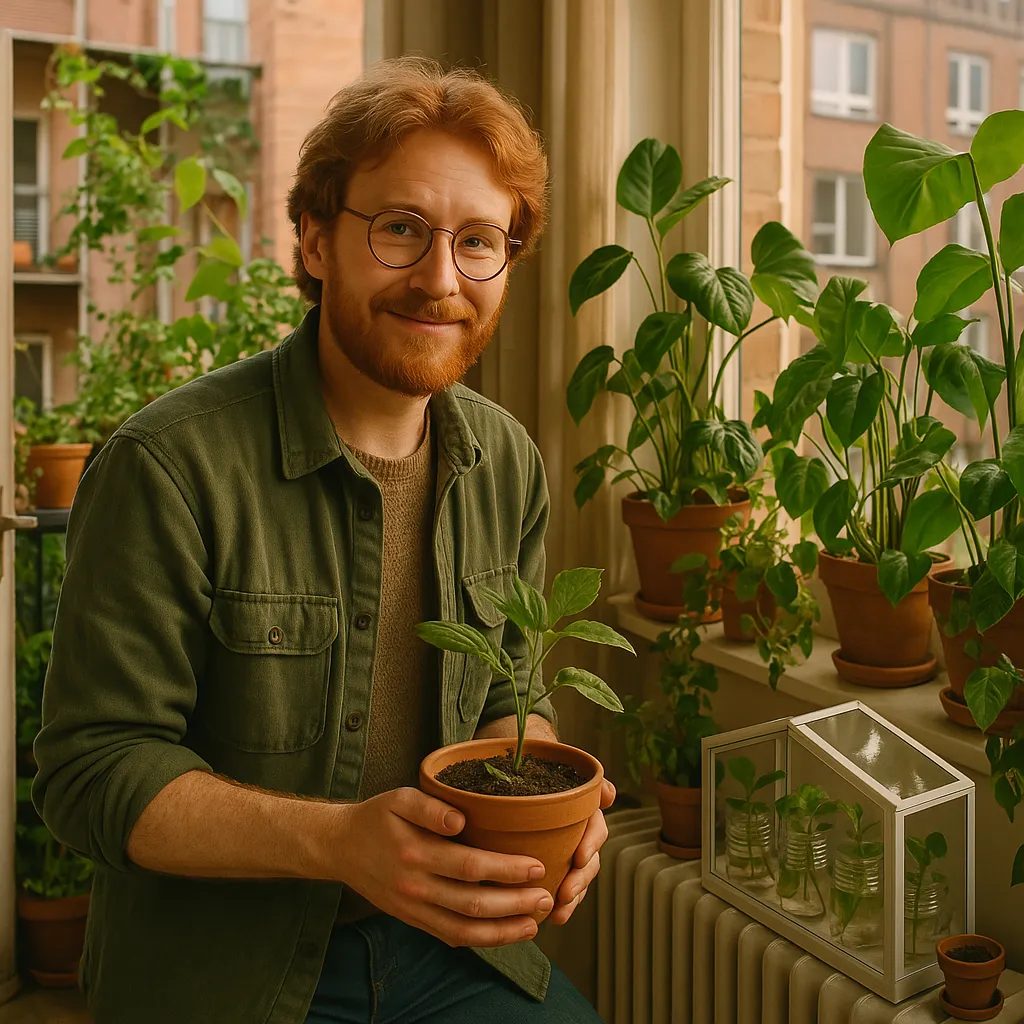
Rowan M.
Indoor Gardening & Plant Care
Introduction: Why Low-Maintenance Houseplants Are a Game-Changer
If you’ve ever admired lush, leafy homes on Instagram and thought, “I could never keep those alive,” you’re not alone. As someone who swapped a countryside nursery for a city apartment, I know firsthand how intimidating indoor gardening can seem—especially when you’re juggling a busy schedule, limited space, or a less-than-sunny windowsill. But here’s the good news: you don’t need a green thumb, a big budget, or even much natural light to enjoy the beauty and benefits of indoor greenery.
Low-maintenance houseplants are true game-changers for urban dwellers, beginners, and anyone with a packed calendar. These resilient apartment plants thrive on a little neglect, forgive the occasional missed watering, and can brighten up even the smallest studio flat. Plus, they’re budget-friendly and perfect for renters who can’t make permanent changes to their space.
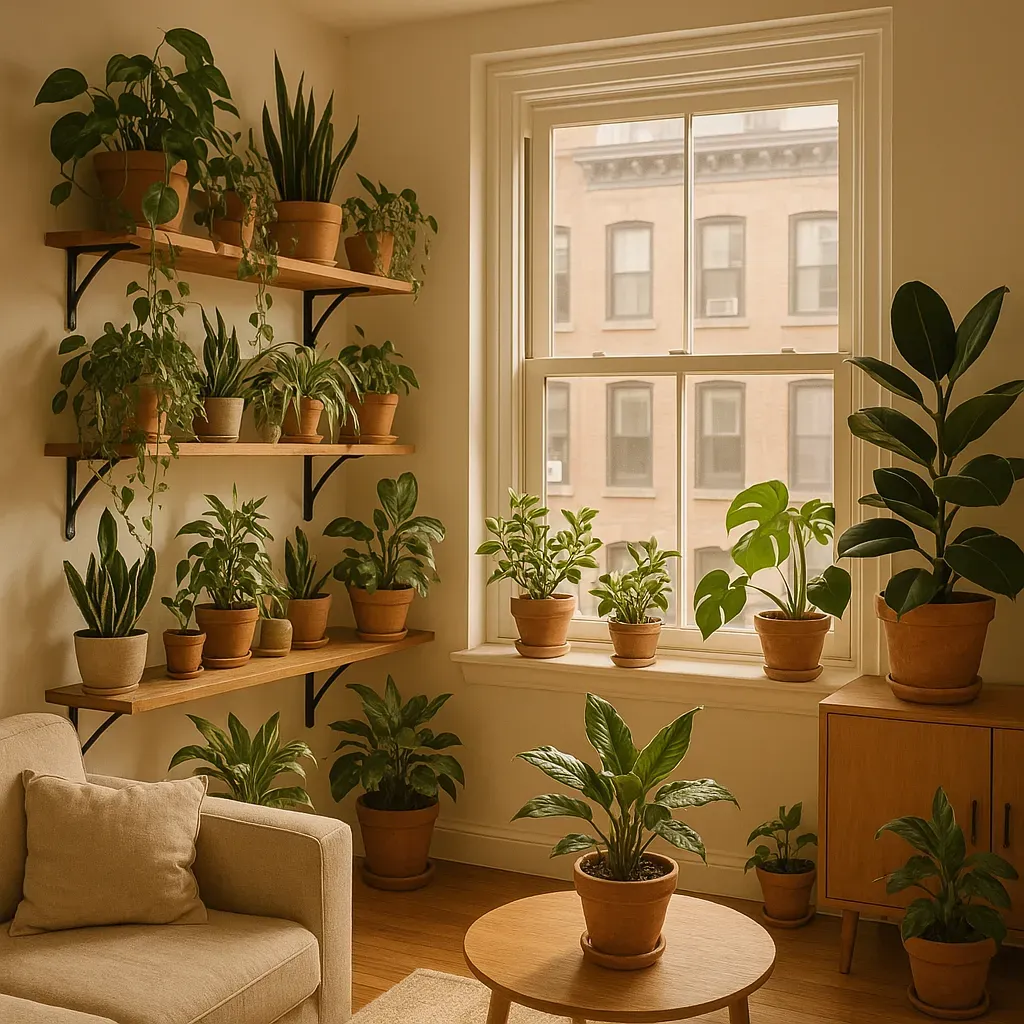
In this post, I’ll introduce you to my top 5 easy houseplants for beginners—plants that have survived (and thrived!) in my own city home, despite forgetful watering and tricky lighting. Whether you’re looking to boost your mood, purify your air, or simply add a touch of nature to your apartment, these low-maintenance indoor plants prove that anyone can create a lush, inviting space—no garden required. Let’s find your perfect plant match!
1. Snake Plant (Sansevieria): The Indestructible Beauty
If you’re searching for the ultimate low-maintenance houseplant, the Snake Plant (Sansevieria) is my top pick for apartment dwellers and anyone new to indoor gardening. Often called the “indestructible beauty,” this plant’s upright, sword-like leaves bring a striking, architectural flair to any room—no green thumb required.
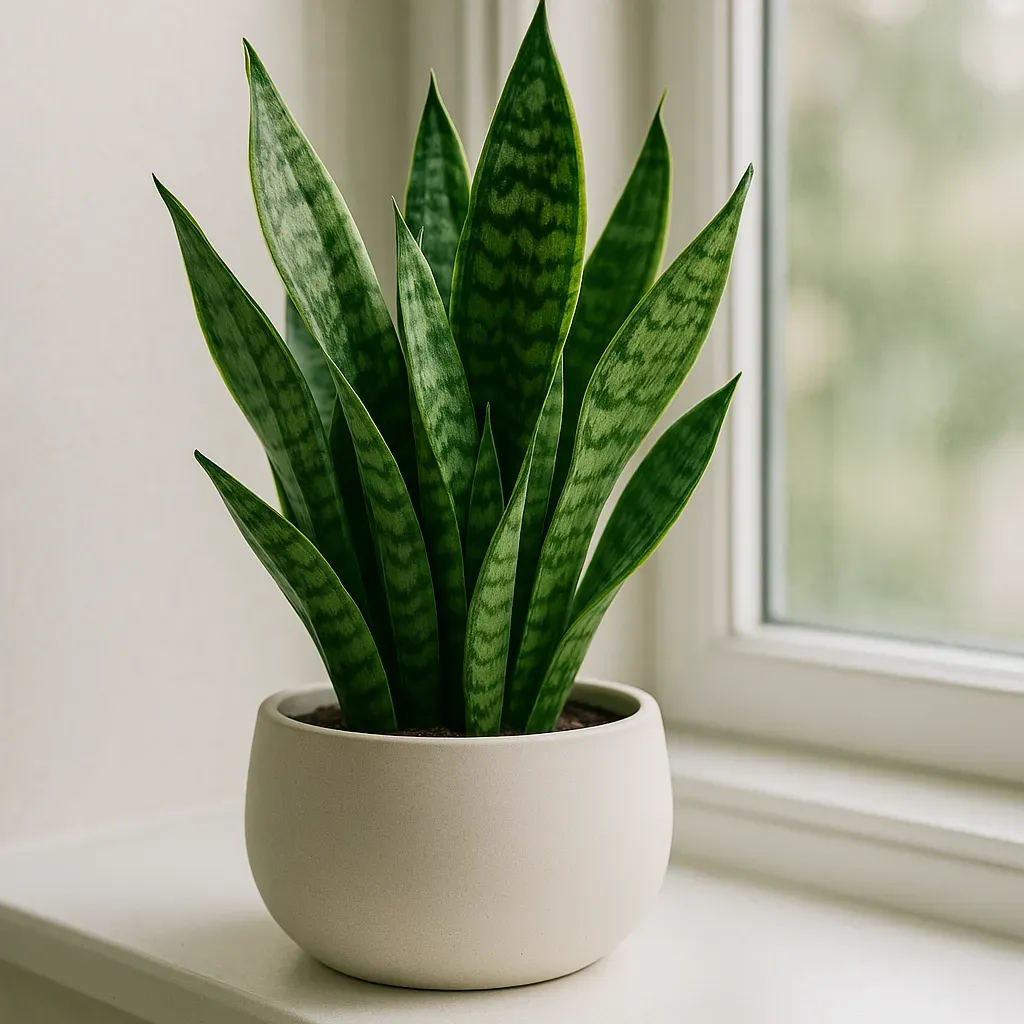
What makes the Snake Plant a superstar among easy indoor plants? It’s incredibly resilient. I’ve seen these beauties thrive in everything from sun-drenched living rooms to dimly lit hallways. Snake plant care is refreshingly simple: they tolerate low light, don’t mind the occasional missed watering, and are unfazed by dry apartment air. In fact, overwatering is the only real danger—let the soil dry out completely between waterings (usually every 2-3 weeks is plenty, even less in winter).
If you’re unsure when to water, a tool like the XLUX Soil Moisture Meter can help you avoid overwatering by giving you a quick, accurate read on soil moisture—no batteries required.
For placement, Snake Plants are wonderfully versatile. Tuck one into a bedroom corner, line up a few on a windowsill, or use a tall variety as a living room statement piece. Their vertical growth habit means they take up minimal floor space—perfect for small apartments or even a cozy studio flat.
As a bonus, Snake Plants are known for their air-purifying abilities, helping to filter out common indoor toxins and boost your home’s freshness. For a stylish touch, pop your Sansevieria into a sleek ceramic pot or a woven basket to complement your décor. Whether you’re a plant newbie or just want a fuss-free green companion, the Snake Plant truly earns its spot among the best plants for apartments.
2. ZZ Plant (Zamioculcas zamiifolia): Glossy and Unstoppable
If you’re looking for a houseplant that practically thrives on neglect, let me introduce you to the ZZ plant (Zamioculcas zamiifolia). With its thick, glossy leaves and upright stems, the ZZ plant brings a touch of lush greenery to any room—no green thumb required. It’s one of my top recommendations for busy people or anyone new to indoor gardening, thanks to its reputation as one of the most forgiving low light houseplants around.
ZZ plant care couldn’t be simpler. This plant is incredibly drought-tolerant, so if you occasionally forget to water (we’ve all been there!), it won’t hold a grudge. In fact, it prefers to dry out between waterings—just check that the top inch of soil is dry before giving it a drink. Overwatering is the only real enemy here, so err on the side of less rather than more. Again, a soil moisture meter can be a handy tool for beginners to avoid the most common mistake.
Adaptable to a wide range of lighting conditions, the ZZ plant is perfectly content in low light corners, making it ideal for apartments, offices, or any spot that doesn’t get much sun. I love placing mine on a bookshelf or in a hallway where other plants might struggle. Just avoid direct, harsh sunlight, which can scorch those beautiful leaves.
To keep your ZZ plant healthy, dust the leaves occasionally to let them shine and help with photosynthesis. Fertilize lightly once or twice during the growing season (spring and summer), but don’t stress if you forget—this plant is all about easy living. With its resilience and good looks, the ZZ plant is a must-have for anyone seeking stylish, low-maintenance greenery in a small space.
3. Pothos (Epipremnum aureum): Effortless Trailing Charm
If you’re searching for a plant that delivers maximum impact with minimal fuss, look no further than the pothos (Epipremnum aureum). As someone who’s helped countless city dwellers green up their homes, I can confidently say pothos is a true superstar among easy trailing plants. Its lush, heart-shaped leaves spill gracefully from shelves, bookcases, or hanging baskets, instantly adding a touch of jungle charm—even in the smallest apartment corners.
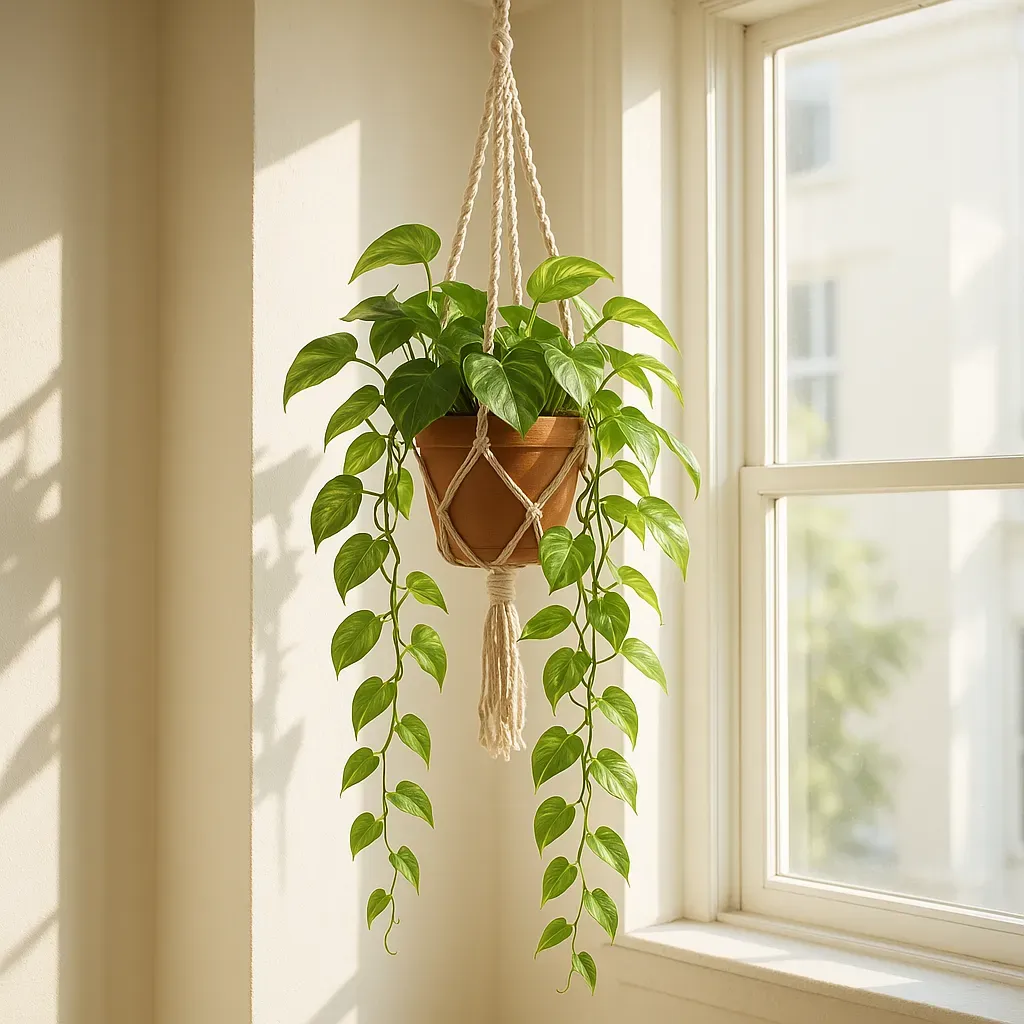
What makes pothos care so beginner-friendly? This plant is famously forgiving. Forgot to water for a week? No problem—pothos bounces back from the occasional dry spell. It’s equally happy in bright, indirect light or those trickier low-light spots (just expect slower growth in shadier nooks). This adaptability makes it one of the best beginner houseplants for renters and busy urbanites alike.
For easy care: water when the top inch of soil feels dry, and don’t worry if you miss a day or two. Pothos isn’t picky about humidity or potting mix, and it rarely suffers from pests. To keep those trailing vines looking their best, give them a gentle trim now and then—snip just below a leaf node, and you’ll encourage bushier growth.
If you want to display your pothos in style, consider using macrame plant hangers for a boho touch that maximizes vertical space and brings greenery to eye level.
Feeling adventurous? Pothos propagation is a breeze. Simply pop a healthy cutting in water or moist soil, and you’ll have a brand-new plant in a few weeks. I love lining up jars of cuttings on my kitchen windowsill—it’s a budget-friendly way to multiply your greenery and share with friends.
Whether you drape it from a high shelf, let it cascade from a macramé hanger, or train it along a wall, pothos brings effortless style and life to any space. Ready to try one? Trust me—your future self (and your apartment) will thank you!
4. Spider Plant (Chlorophytum comosum): Friendly and Forgiving
If you’re searching for a true apartment gardening superstar, look no further than the Spider Plant. As someone who’s helped countless city dwellers start their indoor plant journeys, I can confidently say that spider plant care is as easy as it gets—making it one of the best easy indoor plants for beginners and busy folks alike.
Why do I love spider plants for small spaces? They’re incredibly adaptable. Whether your apartment is flooded with sunlight or you’re working with a shadier corner, spider plants will thrive. They tolerate a bit of neglect (we’ve all forgotten a watering or two!) and bounce back with minimal fuss. Plus, their arching green-and-white leaves add instant freshness to shelves, desks, or even hanging baskets—perfect for maximizing vertical space.
If you want to keep your surfaces tidy and protect them from water runoff, a humidity tray is a simple solution. It catches excess water and helps maintain a bit of extra humidity around your plant—especially helpful in dry apartments.
Care is simple: water when the top inch of soil feels dry, and avoid letting the pot sit in water. Spider plants aren’t fussy about humidity or temperature, so they’re right at home in most urban apartments. For placement, I recommend a spot with bright, indirect light, but they’ll also manage in lower light—just expect slightly slower growth.
One of my favorite features? Spider plants produce adorable baby offshoots, known as ‘spiderettes.’ You can easily snip these off and root them in water or soil to grow new plants—ideal for sharing with friends or expanding your own indoor jungle without spending a penny.
If you’re new to apartment gardening or want a forgiving, cheerful addition to your collection, the spider plant is a classic choice that won’t let you down. Ready to give it a try? Find a cozy spot, grab a small pot, and let this friendly plant work its magic in your home.
5. Cast Iron Plant (Aspidistra elatior): The Ultimate No-Fuss Classic
If you’re searching for a houseplant that truly lives up to the phrase “set it and forget it,” let me introduce you to the Cast Iron Plant (Aspidistra elatior). As someone who’s juggled city life, work deadlines, and the occasional forgetful watering schedule, I can confidently say this is the ultimate no-fuss houseplant for apartments and busy lifestyles.
Why is the Cast Iron Plant a favorite among urban dwellers and renters? For starters, it thrives in low light—think dim corners, hallways, or that spot farthest from your window. It’s also incredibly forgiving if you miss a watering (or three). In fact, overwatering is more of a risk than underwatering, so it’s perfect for anyone who’s still building their plant care confidence.
Practical Cast Iron Plant Care Tips:
- Light: Tolerates low light but will also do well in moderate, indirect light. Avoid direct sun, which can scorch its leaves.
- Water: Let the top inch of soil dry out before watering. In winter, you can water even less frequently.
- Soil: Any well-draining potting mix will do—no need for anything fancy.
- Humidity: Average apartment humidity is just fine, but it won’t complain if you forget to mist.
- Feeding: A light feed with a balanced houseplant fertilizer once a month during spring and summer is plenty.
Placement Ideas:
- Tuck it beside your sofa, in a hallway, or even in a bathroom with a small window.
- Its upright, arching leaves add a touch of lush greenery without taking up much floor space—ideal for small apartments.
The Cast Iron Plant is also a renter’s dream: it’s non-toxic to pets, rarely outgrows its pot, and shrugs off the occasional draft or temperature change. If you’re new to indoor gardening or just want a plant that won’t add to your to-do list, Aspidistra elatior is a classic choice.
Ready to try one of the best plants for low light apartments? The Cast Iron Plant might just become your new favorite green roommate!
How to Choose the Right Low-Maintenance Plant for Your Space
Choosing houseplants for your apartment doesn’t have to be overwhelming—even if you’re a complete beginner. The key is to match the plant’s needs with your unique space and lifestyle. Here’s how I approach it, both as a horticulturist and a fellow city dweller:
1. Assess Your Light: Start by observing your apartment’s natural light. Is your window north-facing (gentle, indirect light), or does it get bright afternoon sun from the west? Snake plants and pothos thrive in low to medium light, making them some of the best plants for apartments with limited sunlight. If you have a sunny spot, succulents or a ZZ plant are great options.
If your space is especially dim, supplementing with a grow light can help your plants thrive, even in windowless rooms.
2. Consider Your Space: Small studio? No problem! Opt for compact plants like peperomia or trailing varieties that can hang from shelves. If you’re short on floor space, think vertical—wall-mounted planters or hanging baskets are perfect for maximizing greenery without cluttering your living area. A multi-tier plant stand is a great way to display several plants vertically without taking up much room.
3. Match to Your Lifestyle: Be honest about your schedule. If you travel often or tend to forget watering, look for drought-tolerant choices like snake plants or ZZ plants. For those who enjoy a regular care routine, ferns or peace lilies can be rewarding (just remember they like a bit more attention).
Beginner Plant Tips:
- Start small—one or two easy-care plants will help you build confidence.
- Read care tags or ask at your local plant shop for advice tailored to your space.
- Don’t stress about perfection; every plant parent learns as they grow!
Remember, the best plants for apartments are the ones that fit your lifestyle and bring you joy. With a little observation and the right match, you’ll be well on your way to creating a lush, low-maintenance indoor oasis—no green thumb required.
Conclusion: Bring Greenery Home—No Green Thumb Required
If there’s one thing I’ve learned from years of nurturing plants in both sprawling nurseries and tiny city flats, it’s this: anyone can enjoy the beauty and benefits of indoor greenery—no green thumb (or garden) required! The low-maintenance houseplants we explored today are perfect for busy schedules, small spaces, and even the most hesitant beginners. Not only do they brighten up your home, but they also help purify the air and create a calming, welcoming atmosphere.
Remember, you don’t need fancy equipment or expert knowledge to get started. Whether you choose a resilient snake plant, a cheerful pothos, or a forgiving ZZ plant, each one is a step toward a more vibrant, nature-filled home. Why not take the next step today? Pop into your local plant shop for some inspiration, or check out our recommended beginner-friendly plant kits linked below. Your perfect plant match is waiting—bring a little green joy into your space and watch it thrive right alongside you!
